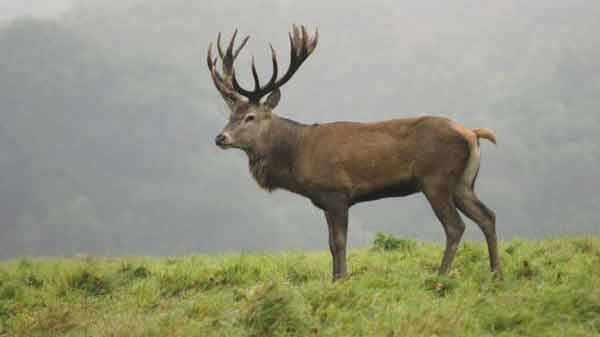
Oslo, Norway (BBN)-When red deer arrived on Scotland's outer islands some 5,000 years ago, they were probably brought across the ocean by humans from as far away as central Europe, a study suggests.
Researchers compared ancient and modern deer DNA across the region, reports BBC.
In particular, analysis of deer samples from archaeological sites in Orkney and the Outer Hebrides revealed surprisingly distinctive DNA sequences.
The animals are unlikely to have come from the mainland, the scientists say.
Even Norway and Ireland are unlikely sources, they add, suggesting seafaring Neolithic people trafficked the beasts from a mysterious and more far-flung source.
Red deer, the largest of modern British land animals, were banished from most of western Europe and restricted to southern Spain during the last Ice Age.
When the ice retreated about 10,000 years ago, these and other beasts - including humans - gradually repopulated northern regions.
But red deer didn't make it to these outer Scottish isles until about 5,000 years ago.
Humans, which were increasingly adopting domestication during this period, are thought to be responsible for the deer's arrival - but the new study casts doubt on the obvious idea that they shipped them from mainland Scotland.
The ancient Orkney and Hebrides deer DNA in the new study is not a good match for any known population of red deer, including ancient specimens from mainland Scotland, Ireland and Norway.
"We think that the most likely source is from an unsampled population somewhere - we could be looking at somewhere like mainland Europe," the paper's lead author, Dr David Stanton from Cardiff University, told the BBC News website.
"There's not a huge amount known about the seafaring capabilities of humans in northern Europe around that time - we just don't know.
"This potentially gives us a bit of a clue as to what they might have been capable of."
THE SEARCH CONTINUES
If central Europe was indeed the source, then the deer could have shared the trajectory of the Orkney vole, which arrived on the boats of Belgian farmers 5,100 years ago according to a 2013 study.
One of the authors of that research, Prof Jeremy Searle from Cornell University in the US, said the new work on red deer DNA was "absolutely fascinating" but cautioned that there are other explanations for the genetic uniqueness of the ancient outer-island deer.
"One other explanation - which they do actually mention in the paper - is that there was an initial colonisation of the British Isles by the red deer, and then that initial genetic type later got replaced by another genetic type," he said.
"So what you're seeing around the periphery is kind of the relic of that initial colonisation, while the bulk of Britain is represented by the second population."
Prof Searle and colleagues have found evidence for this sort of two-phase colonisation in several British species, he explained.
The argument for a long-range deer delivery could be clinched, he suggested, by establishing a strong genetic similarity with that mysterious source population - wherever it may be.
"I think the study is a really interesting springboard for future investigations."
Dr Stanton agrees. "It's the tip of the iceberg really," he said of the new findings. "We've got a lot more searching to do."
BBN/SK/AD